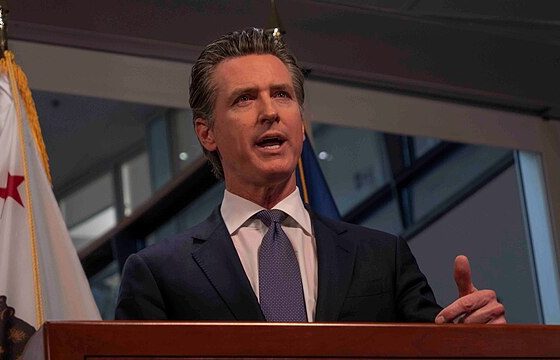A well-funded environmentalist group played a key role in the push to remove dams in the Pacific Northwest’s Klamath River ahead of premature deaths of thousands of salmon.
American Rivers — an organization that has received millions of dollars from left-of-center environmentalist grantmaking organizations in recent years — was “the orchestrator of the Klamath dams removal project,” according to Siskiyou News, a local outlet in Northern California. The drawdowns of several reservoirs pursuant to the scheduled removal of four dams in the river preceded the deaths of “hundreds of thousands” of young salmon in the waterway, according to Oregon Public Broadcasting.
The push to remove the dams is often marketed as beneficial for salmon, as proponents of the plan — including American Rivers — have argued that the dams obstruct the natural movements of salmon as well as their access to habitat. However, weeks after beginning the process to remove one of the systems scheduled for deconstruction on the river, a large number of the 830,000 young salmon released into the river on Feb. 26 had died as of March 2, according to the California Department of Fish and Wildlife (CDFW).
CDFW officials attributed the mass-death to gas bubble disease, which is caused by changes in water pressure, and stated that the changes in pressure driving the deaths was attributable to old dam infrastructure that is slated for removal. The agency further stated that water turbidity and dissolved oxygen levels do not appear to have contributed to the mass-death.
The young salmon that died travelled through a tunnel involved in the dam infrastructure that had previously not been accessible to the fish before officials altered the flow of water through the system as part of the removal process, Peter Tira, an information officer for the CDFW, explained to the Daily Caller News Foundation. The deaths were primarily a function of where the fish were released into the water, and the outcome, though unfortunate, is a learning opportunity for stakeholders who remain committed to making the Klamath River a free-flowing cold water river system again in the long-term, Tira told the DCNF.
American Rivers is also closely involved with the Klamath River Renewal Corporation (KRRC), a nonprofit coalition that is playing a key role in the removals in accordance with its stated mission to “remove the Klamath hydroelectric dams and restore a free-flowing river.” Along with other organizations involved with the KRRC, American Rivers has appointed several officials to the group’s board of directors.
However, some officials and environmental policy experts are not buying the government’s explanation for the mass-death of salmon, asserting instead that it is clear that the removal of the dams set conditions for the mass-death.
“The risk of gas bubbles is well known, so the fact that one million salmon were killed is a failure of government staff to prevent their death. Rather than act as this is the fault of the dam, government staff should acknowledge their mistake and learn from it,” Todd Myers, the director of the Washington Policy Center’s Center for the Environment, told the DCNF. “It is unfortunately typical that when government actions harm the environment, agencies spend more time deflecting blame than addressing the problem or being held accountable.”
Regardless of whether or not dam removal is the right decision, poor planning or execution of the removals should not be excused, Myers emphasized.
Republican California Rep. Doug LaMalfa, whose district includes the river and a is a longtime opponent of removing the dams, agreed with Myers’ assessment of the causes for the deaths.
LaMalfa has been warning removal proponents “from day one” that moving to hastily remove the dams without a comprehensive plan to handle second-order effects could be catastrophic, he told the DCNF. He believes many proponents of removing dams are mostly interested in adding metaphorical “trophies” to their shelves rather than devising and implementing effective plans to remove the dams responsibly.
“This is about political scores. People like me and others have been warning them for two decades that when you do this and you have no plan for the silt — and they don’t have one — they have been exposed that they have no plan. They’re just doing it, doing it on the fly,” LaMalfa told the DCNF. “We see the destruction with the flume that has gone down the whole river and out in the ocean. I understand it’s even moved all the way up towards Crescent City, which is many miles up the coast.”
American Rivers, meanwhile, does not appear to have publicly addressed the high volume of salmon deaths in the river, despite having advocated for the removal of the Klamath River dams for years. American Rivers did not respond to requests for comment.
“I’ve been around natural disasters all of my life, and I’ve never seen anything like this,” Siskiyou County Supervisor Ray Haupt told the California Globe. “The river is essentially dead, as is everything in it.”
American Rivers has received at least $3.6 million from left-of-center grantmaking and environmentalist organizations — including the Charles Stewart Mott Foundation, the Resources Legacy Fund, the William and Flora Hewlett Foundationand the Water Foundation — since 2020, according to a review of tax filings. The New Venture Fund, one of the grantmaking nonprofits overseen by left-wing dark money behemoth Arabella Advisors, gave American Rivers nearly $400,000 between 2020 and 2022, according to tax filings.
There are still several other dams on the river that are set to come down as part of the removal project. Many property owners are seeing the values of their property along the water drop because of changes driven by the dam removal, LaMalfa told the DCNF.
“People with homes in the area are seeing their home values drop, even in one case their actual house might drop into the canyon because the water table has shifted,” LaMalfa told the DCNF. “And people with loans on their homes no longer have the value to keep their equity up.”
For its part, KRRC has established a mitigation fund to pay locals who may be adversely impacted by the consequences of dam removal.
“The California Department of Fish and Wildlife (CDFW) manages the Fall Creek Fish Hatchery,” which is the facility that released the ill-fated salmon into the waterway, a KRRC spokesperson told the DCNF. “The Department determined the mortality of salmon fry was caused by remaining dam infrastructure, not by dam removal. Fortunately, that infrastructure will be removed along with the rest of the dam this year. In the meantime, CDFW will be trucking fish around the dam to avoid this occurring with upcoming releases from the hatchery. “
Nick Pope on March 24, 2024












